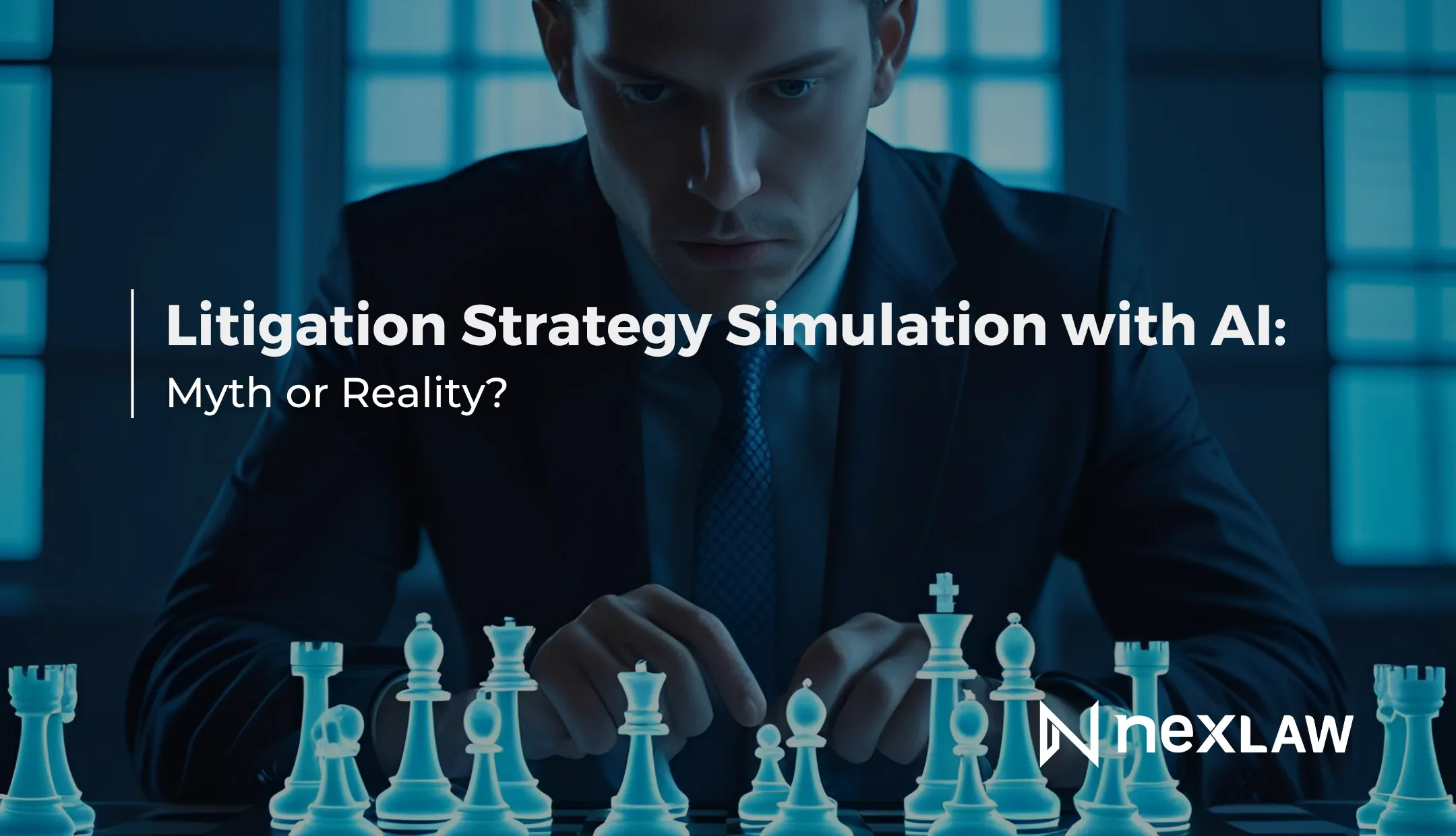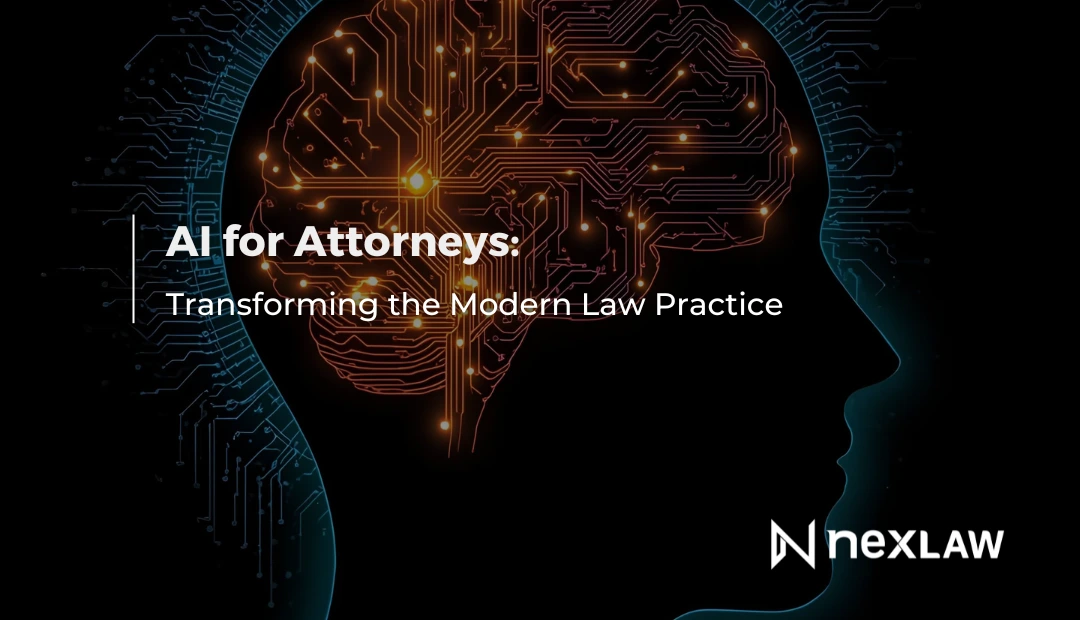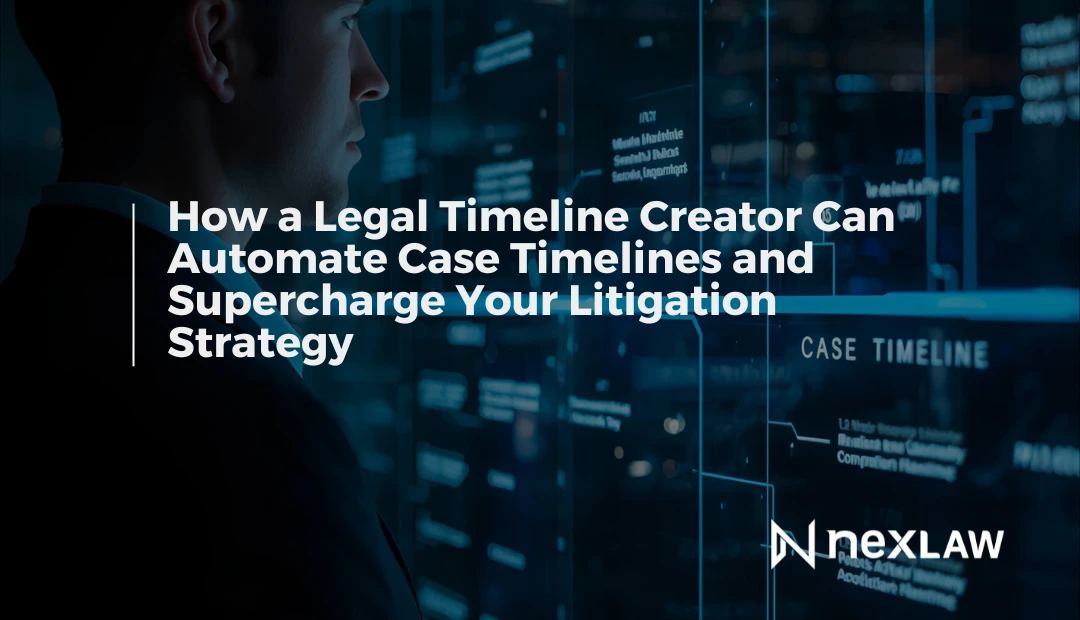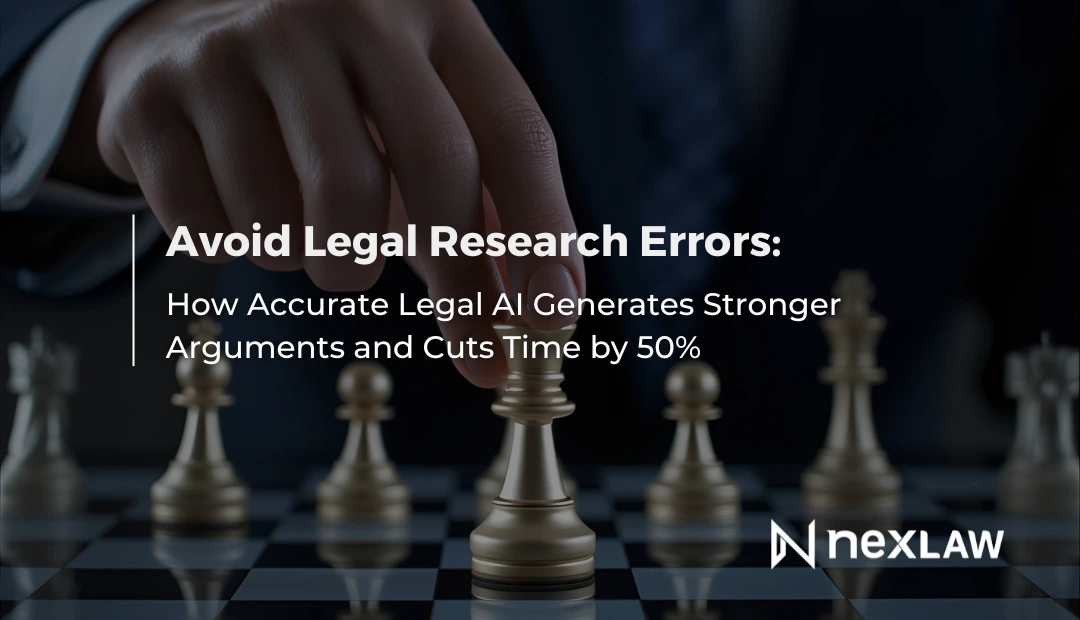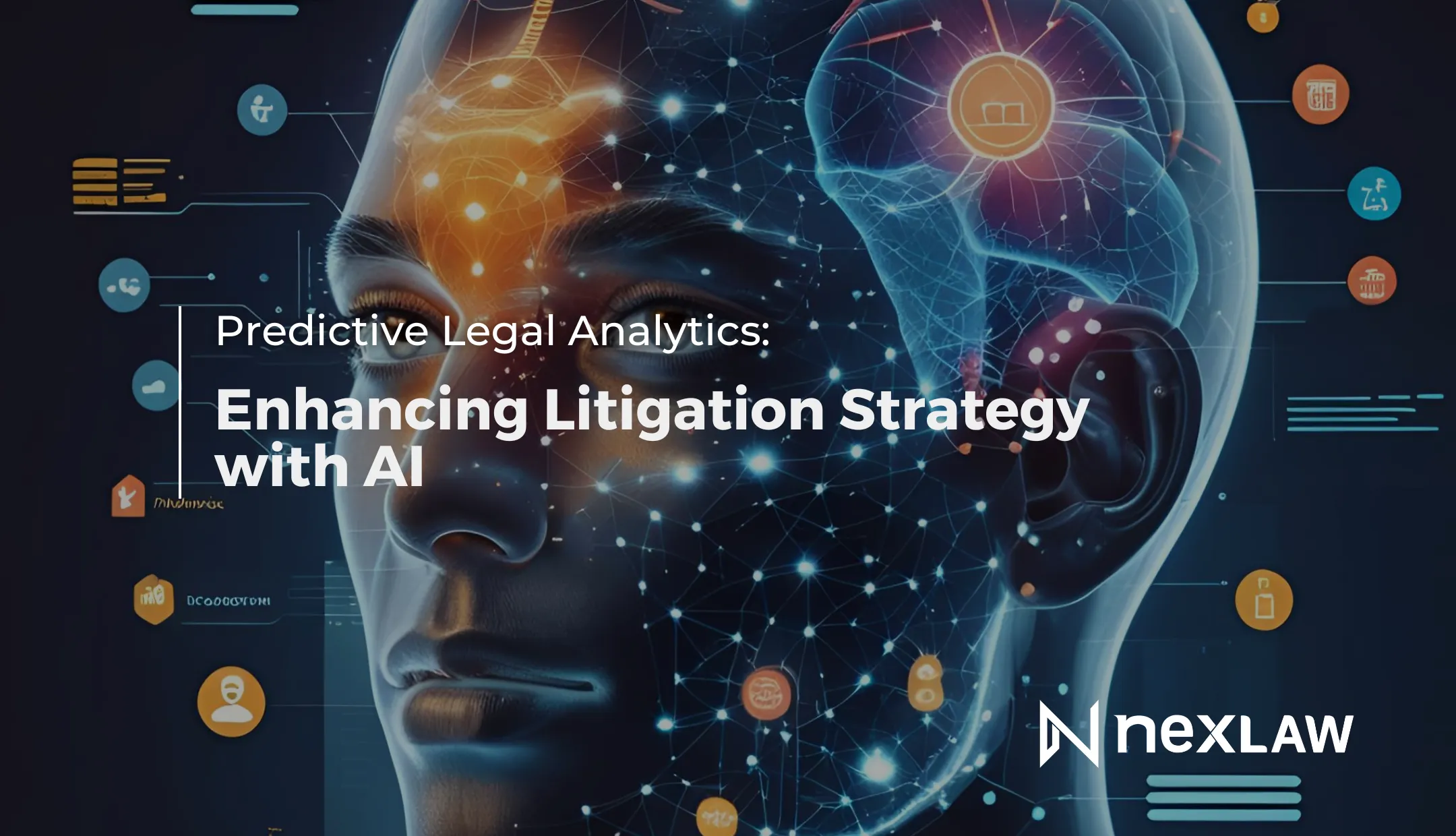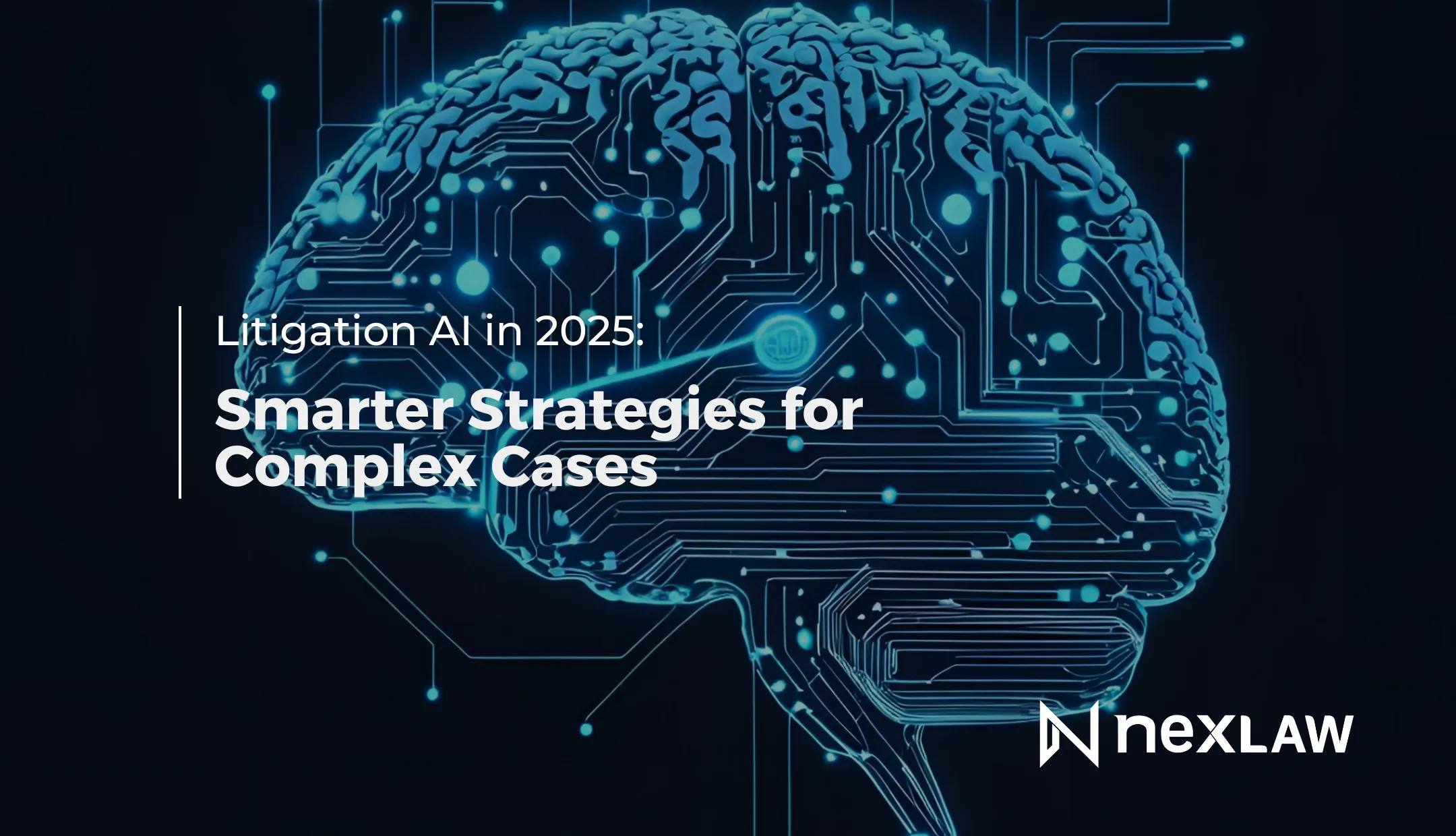Litigation Strategy Simulation with AI: Myth or Reality?
The question of whether AI can effectively simulate litigation strategies moved from theoretical to practical in July 2025, when Fortune reported that lawyers are incorporating AI “copilots” into workflows as legal-tech funding reached $4.98 billion in 2024. But can AI truly model the complex human dynamics, judicial preferences, and unpredictable variables that determine litigation outcomes?
Unlock Legal Insights Instantly!
Recent data shows 53% of firms now use AI for legal research and 42% for summarizing legal narratives, while Harvard Law School research demonstrates AI reducing associate time from 16 hours to 3-4 minutes on high-volume litigation matters. The evidence suggests AI litigation simulation has evolved beyond myth to become a competitive necessity.
The Current State of AI Litigation Simulation
From Pattern Recognition to Predictive Modeling
Modern AI litigation simulation combines massive datasets of case outcomes with sophisticated modeling algorithms to predict litigation scenarios with increasing accuracy. Unlike simple pattern matching, these systems analyze judge behavior, opposing counsel strategies, and case-specific variables to generate actionable insights.
Key simulation capabilities:
- Judicial tendency analysis: Predicting judge rulings based on historical decision patterns
- Settlement probability modeling: Calculating optimal settlement timing and amounts
- Jury selection optimization: Analyzing juror profiles for favorable outcome prediction
- Motion success rates: Historical analysis of motion outcomes by judge and case type
Real-World Implementation Success Stories
Troutman Pepper Locke’s AI system, processing 3,000 daily prompts, demonstrates practical AI integration beyond administrative tasks. Their recent merger success, saving $200,000 through AI efficiency, shows how sophisticated AI implementation delivers measurable results in complex legal scenarios.
Proven simulation applications:
- Resource allocation optimization across multiple cases
- Timeline prediction for case resolution and client communication
- Cost-benefit analysis for litigation vs. settlement decisions
- Strategic planning for complex multi-jurisdictional cases
The Science Behind Litigation Strategy Simulation
Data Sources and Analysis Methods
Effective litigation simulation requires comprehensive data integration from multiple sources: court records, judicial decisions, attorney track records, and case-specific variables. AI systems analyze these datasets to identify patterns invisible to human observation.
Critical data components:
- Historical case outcomes: Win/loss rates by case type, jurisdiction, and attorney
- Judicial behavior patterns: Ruling tendencies, sentencing patterns, and procedural preferences
- Opposing counsel analysis: Strategy patterns, settlement preferences, and trial success rates
- Case-specific variables: Claim amounts, evidence strength, and client characteristics
Accuracy Limitations and Human Oversight
The Stanford HAI study referenced in July 2025 found that even the best-performing legal AI tools “made up information in about one out of six instances,” highlighting the critical need for human oversight in litigation simulation. These systems provide probability assessments, not guarantees.
Simulation accuracy factors:
- Historical data quality and completeness
- Jurisdiction-specific legal nuances and recent changes
- Unpredictable human factors in judicial decision-making
- Unique case circumstances not captured in historical patterns
Practical Applications in Modern Litigation Practice
Case Strategy Development and Resource Planning
AI simulation enables data-driven litigation strategy development, moving beyond intuition to evidence-based planning. This approach particularly benefits complex commercial litigation where multiple strategies require evaluation.
Strategic planning applications:
- Discovery strategy optimization: Predicting most effective discovery approaches based on case type and opposing counsel
- Motion filing sequences: Timing and ordering of motions for maximum strategic impact
- Expert witness selection: Matching expert profiles with historical success rates by judge
- Trial calendar planning: Predicting case duration and resource requirements
Settlement Negotiation Enhancement
AI simulation provides powerful tools for settlement negotiations by analyzing comparable cases, predicting trial outcomes, and identifying optimal negotiation timing. This data-driven approach strengthens attorney positions while managing client expectations.
Settlement optimization features:
- Real-time settlement probability updates based on case developments
- Comparable case analysis for settlement range determination
- Timing optimization for maximum settlement leverage
- Risk assessment for trial vs. settlement decisions
Technology Integration and Workflow Enhancement
Seamless Practice Management Integration
Effective litigation simulation requires integration with existing practice management systems to provide actionable insights within normal workflows. Standalone simulation tools create inefficiencies that reduce adoption and effectiveness.
Integration requirements:
- Case management system connectivity for real-time strategy updates
- Calendar integration for timeline prediction and deadline management
- Document management system analysis for evidence strength assessment
- Client communication tools for strategy explanation and expectation management
Professional Responsibility and Ethical Considerations
The Illinois Supreme Court’s January 1, 2025 AI policy emphasizes competent AI usage and appropriate supervision of AI-generated recommendations. Litigation simulation must comply with professional responsibility standards while providing strategic value.
Ethical compliance requirements:
- Human oversight for all AI-generated strategic recommendations
- Client disclosure when AI simulation influences case strategy
- Competency maintenance for AI simulation tool usage
- Documentation of AI assistance in strategic decision-making
Measuring Simulation Effectiveness and ROI
Performance Metrics and Success Indicators
Successful AI litigation simulation implementation requires measurable outcomes that demonstrate strategic value and competitive advantage. These metrics guide continued investment and refinement of simulation capabilities.
Key performance indicators:
- Prediction accuracy rates: Comparing simulated outcomes with actual results
- Settlement optimization success: Improved settlement terms through AI-guided negotiations
- Resource efficiency gains: Reduced discovery costs and streamlined case preparation
- Client satisfaction improvements: Enhanced strategic communication and expectation management
Competitive Advantages Through Strategic Simulation
Legal sector analyst Jordan Furlong’s prediction of widespread AI adoption “maybe within the next couple of years” suggests that litigation simulation will become standard practice. Early adopters gain significant competitive advantages through superior strategic planning capabilities.
Strategic advantages:
- Enhanced client confidence through data-driven strategy presentations
- Improved case outcome rates through optimized strategic planning
- Reduced litigation costs through efficient resource allocation
- Market differentiation through advanced technological capabilities
The Future of AI-Powered Litigation Strategy
Emerging Capabilities and Technology Advancement
As AI capabilities advance and legal datasets expand, litigation simulation accuracy continues improving. Future developments promise even more sophisticated modeling that accounts for changing legal landscapes and emerging case law.
Anticipated improvements:
- Real-time strategy adjustment: Dynamic strategy modification based on case developments
- Cross-jurisdictional modeling: Integrated analysis across multiple court systems
- Predictive case law analysis: Anticipating judicial decisions based on recent trends
- Client outcome optimization: Personalized strategies based on client-specific goals
Integration with Broader Legal Technology Ecosystems
Litigation simulation represents one component of comprehensive legal technology platforms that integrate research, analysis, case management, and client communication. This holistic approach maximizes AI benefits while maintaining professional standards.
Transform Your Litigation Practice with Advanced AI Simulation
In 2025, litigation simulation moved from theory to necessity. Firms that adopt AI-poweredstrategy tools are gaining a clear edge in today’s data-driven legal landscape.
NexLaw AI delivers end-to-end litigation simulation built for trial attorneys, including:
- NeXa AI assistant with 10 integrated tools for case analysis
- TrialPrep for outcome prediction and strategic modeling
- ChronoVault for timeline generation and evidence patterning based on judicial history
Simulate trial strategies, optimize settlement decisions, and build smarter cases—while staying compliant and client-focused.
Book a Demo – See how NexLaw empowers trial teams with strategic AI simulation
Explore Plans – Includes a free 3-day trial to experience NexLaw’s litigation tools
GET 15% OFF for annual plans using promo code: ANNIV15MONTHLY or ANNIV15ANNUALY
*t&c applied | visit our website for more details
